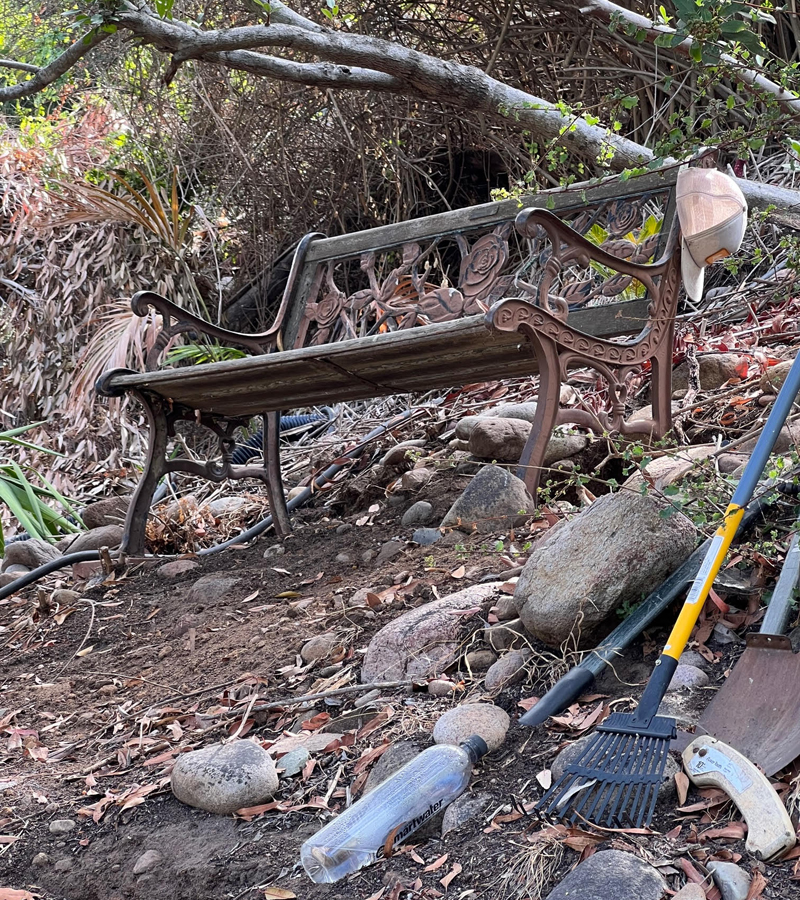
I do a lot of thinking on my quiet canyon bench. It’s much nicer than a traditional therapist’s office. Photo: Jim Mumford
Many people develop a love of gardening and nature as they grow up through older relatives as they care for their flowers, plants, or fruit and vegetable gardens. I spent many family summers enjoying the outdoors and learning about nature in a way that seems a little old-fashioned today.
So many of my relatives have a love for nature. My father, Bob, became a much admired – and published! – nature photographer after retiring from the United States Navy. Mom Sandy is an avid backyard gardener and refuses to throw a struggling plant away, and rarely prunes. My daughter, Allie, loves nature – for her, it’s all about animals. My son Ted and I took a bucket list trip to the Pantanal region of Brazil a few years ago to immerse ourselves in nature.

Clockwise from upper left: Mom, Dad, Allie, and Ted. Photos: Jim Mumford
I’m convinced my love of nature comes from my grandfather. He was a passionate gardener who lived in Westfield, New Jersey. He worked as a corporate attorney for Allied Chemical, a stressful and technical job. He would take the train to New York City to work every day, and there’s no more urban environment as you can imagine.
His reward was coming home to his garden and plants. He converted one of his two summer sleeping porches to a greenhouse. In a climate that gets so cold, having an indoor greenhouse where you can enjoy plants and flowers all year long is a significant luxury item. In San Diego, we don’t appreciate the impact of maintaining that connection to nature all year, but my grandfather did. He grew hyacinths, and when I smell them to this day, fifty years later, my grandfather is immediately in my memory.
Plants and nature improve mental health
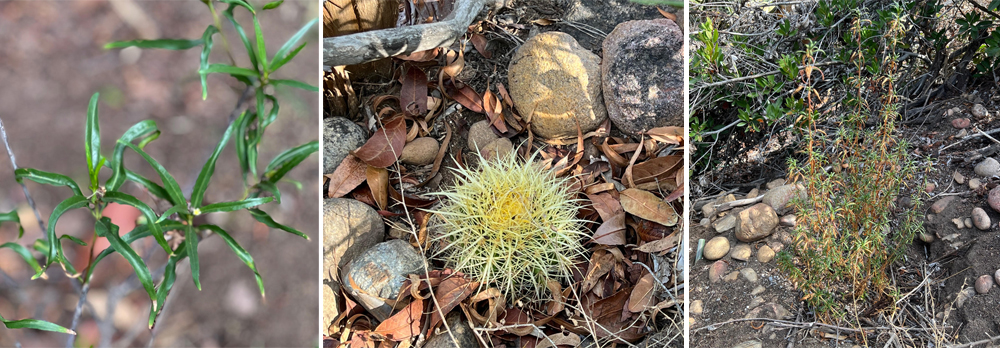
Left to right: I’ve recently added Desert Willow, Barrel Cactus, and Sticky Monkey Flower to my native canyon garden. Photo: Jim Mumford
Years later, as a horticulturalist and expert on our biophilic connection to nature, I now know my grandfather was self-practicing horticultural therapy. It wasn’t considered a scientific field until the 18th century in the United States. Physician Benjamin Rush, considered the “Father of American Psychiatry,” started documenting how gardening benefitted his mentally ill patients. Dr. Rush also took the time to sign the Declaration of Independence.
After World War II, hospitalized veterans used horticultural therapy to help rehabilitate themselves, and it began gaining acceptance.
It finally got a formal name in 1973. The American Horticultural Therapy Association (AHTA) was established and is still the only formal nationwide organization in the U.S. advocating for this practice and the profession. It promotes formal standards, credentials, research, and promotion of HT as a treatment option.
Last week, I read about new scientific work on whether gardening can extend our lives. I thought it was significant, and it made an impact on me. The concepts are strong, powerful, and worthy of discussion in my blog forum.
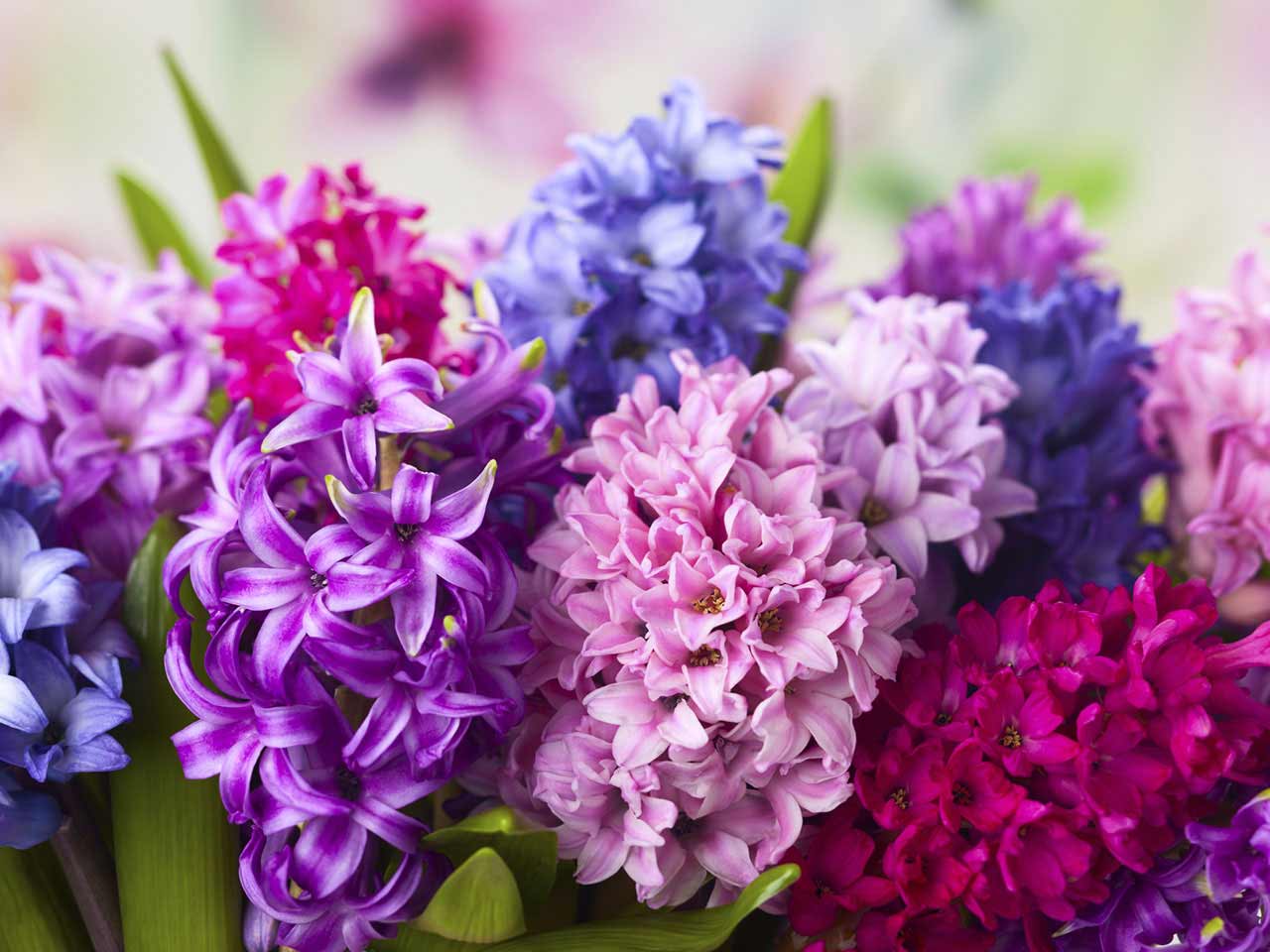
Hyacinths come in a variety of colors, including some purples that pass nicely as blue. But it’s the fragrance that is fixed in my memory. Photo: Pixabay
Horticultural therapy is real, and I believe in its ability to help people. I’ve been asked to recreate fragrances and visuals in gardens used for horticultural therapy. Because your sense of smell is physically and psychologically linked in your brain to memory, using scent can be an essential tool in healing and calming stress. Imagine smelling a rose or another fragrant flower from your childhood – like hyacinths for me. You take in a deep breath which is a calming technique. The smell brings pleasant thoughts to your mind. You just experienced horticultural therapy!
Therapy gardens also provide tactile experiences. Working with your hands on a craft, including gardening is self-soothing. It allows you to focus on something positive. It keeps you in motion, another way to draw in oxygen the plants provide.
So many people turned to gardening and Nature during the coronavirus pandemic. This is not a coincidence. People who bought indoor plants or used their time quarantining at home to work on their landscaping projects were instinctively channeling their biophilic connection to Nature and using horticultural therapy to process the stress of the pandemic.
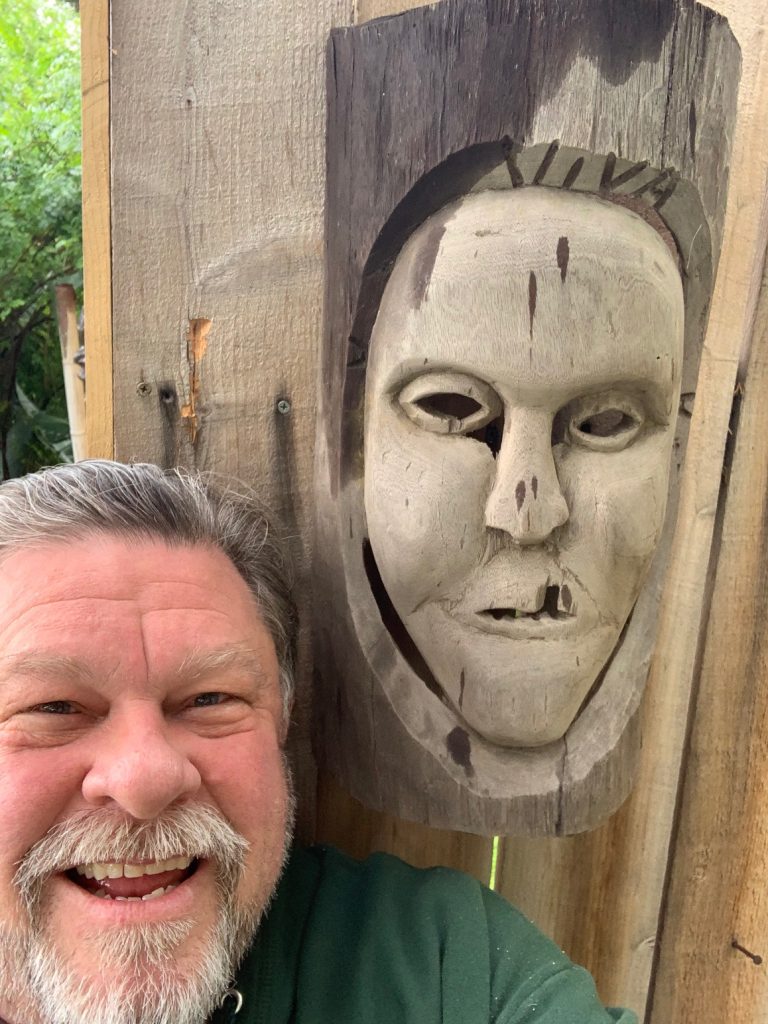
Sheltering in place during the pandemic, this guy helped keep me company. Photo: Jim Mumford
The first thing I began doing when I realized what was happening to us in March 2020 was to work on my own yard, which had been a little bit neglected because of all the things that make our lives busy. In my case, this involved running a business. I began replanting natives down in the typical San Diego inland canyon next to my house. Later, I even experimented with planting phalaenopsis orchids in my trees, just like they grow in nature. They are thriving, and I’m thrilled!
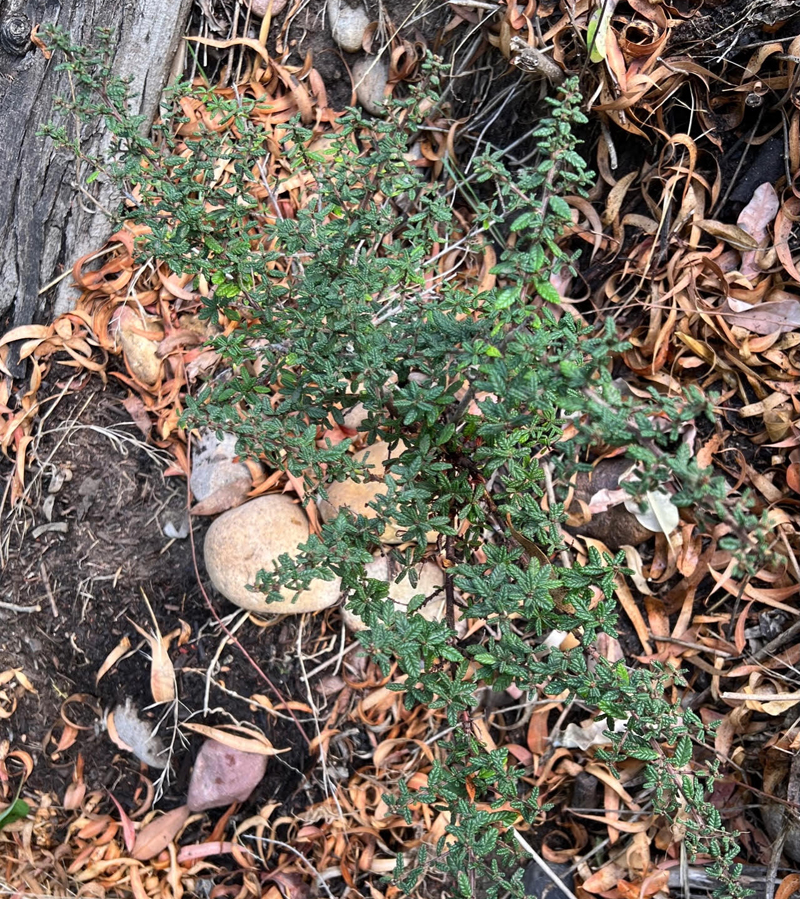
Blue ceanothus is a hardy California wild lilac that will explode in bright blue flowers early next spring. Photo: Jim Mumford
When I’m working with my hands in the dirt, trudging up and down the slopes, and planning out the landscape, I may feel physically tired, but my mind is clear. I find myself solving problems with creativity and clarity. I process challenges and conflicts.
Gardening can help you live longer
There are now multiple studies from the U.S., Australia, Finland, South Korea and more about how gardening enriches our lives and can help people live longer.
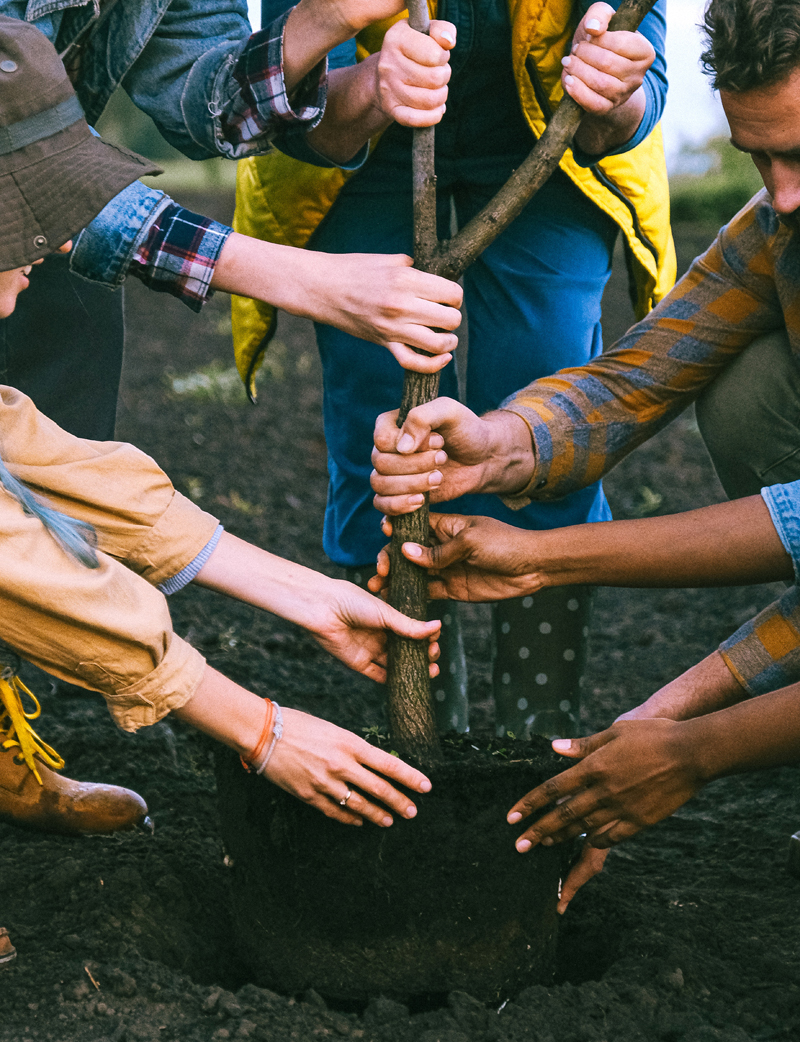
Getting your hands dirty can be a multigenerational social activity. Photo: Anna Shvets
In 2007, University of Colorado Boulder professor Christopher Lowry published his first study about the ways exposure to micro-organisms in soil release the feel-good hormone serotonin in your brain. In 2016, another study by Dr. Lowry showed a reduction in stress-related diseases like colitis from soil exposure. He’s now working with a group of military veterans to see if these microorganisms can reduce inflammation, which causes many serious health problems.
Fifteen years ago, Dr. Lowry joked in an interview his results proved we should all spend more time getting our hands dirty. In a 2020 study from Finland, 75 preschool-age children who planted and tended crops had more robust immune systems than similar children who played in paved play areas. In South Korea this year, adults between ages 20 and 59 were asked to mix soil with their hands. The adults who mixed up soil with naturally occurring microorganisms showed significant improvements in brain activity and heart rates compared to the participants who mixed up soil that had been sterilized “clean.”
Research shows that human beings are instinctively drawn to nature and that we are healthier both mentally and physically in natural environments. Studies show just by getting outside away from our urban settings, we can improve our mood and reduce stress. We seem hard-wired to work outdoors, or at least connect with the real world, not sit inside an air-conditioned box for eight (or ten!) hours every day. Although when the temperatures outside are in the high 90s, it doesn’t seem so bad.
Science shows gardening is good for our health
I’m so glad to see the growing interest in more holistic and less invasive methods of addressing our health concerns. Research by Dr. Roger Ulrich at the Center for Health Systems and Design at Texas A&M University found patients recover more quickly from stress-related problems and even disease and surgery when they view gardens and nature in general. They take less pain medication, and their hospital stays are shorter. They complain less, which makes for happier staff and visitors.
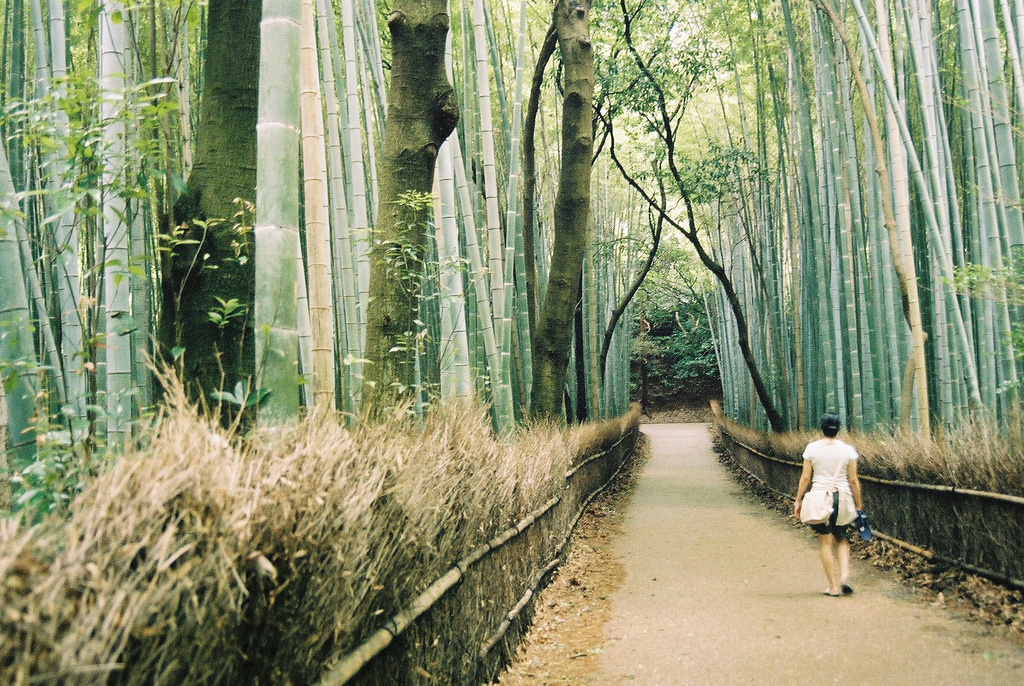
Ward off any kind of stress with Shinrin-yoku, the Japanese art of forest bathing. Photo: Courtesy Wikipedia
We are all taking mental health so much more seriously. Physicians, psychiatrists, and occupational therapists are taking horticultural therapy more seriously than ever too. Forest bathing is a real thing prescribed by medical professionals as a form of treatment in Japan.
Medical researchers were already concerned about how much stress affected our health before the pandemic. Stress releases cortisol, the “fight or flight” hormone that controls stress response. When we can reduce and manage stress and calm our nerves, we prevent cortisol from flooding our bloodstream and causing all kinds of problems. A Swiss study found that adding horticultural therapy to a pain-management program improved participants’ physical and mental health and their coping ability with chronic pain.
Researchers are pushing horticultural therapy further and applying it to mental health issues like PTSD and depression. Study after study finds improvements in mental health among prison populations, juvenile rehabilitation centers, nursing home residents, and mental health treatment centers. It improves learning and reduces bullying in schools. It relieves the worst symptoms of dementia.
Investing in horticultural therapy
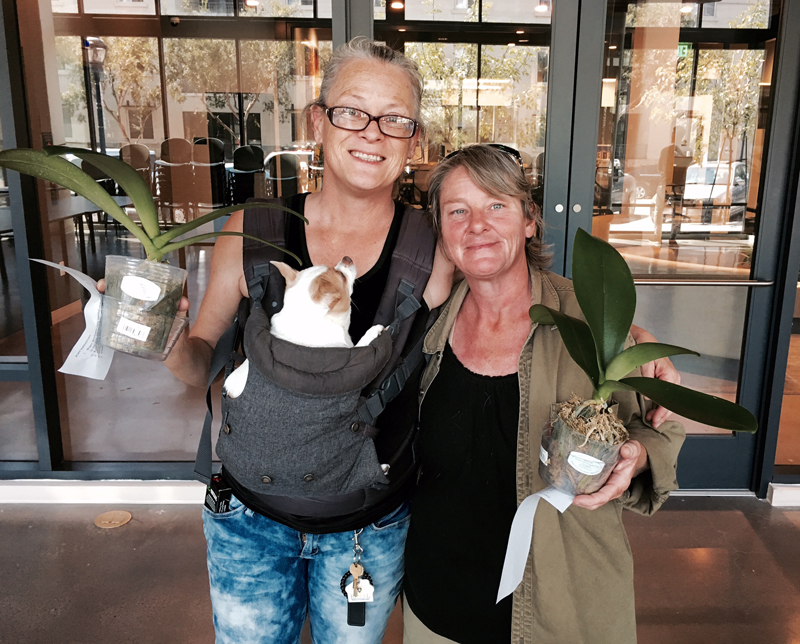
It was special the first time we donated plants to the Alpha Project in 2016, and it’s just as special to us six years later. Photo: Jim Mumford
From my own experience, the simple act of donating plants to the formerly homeless San Diegans now living at the Alpha Centers in downtown Imperial Beach and the Midway District brought genuine smiles and positive energy to people who haven’t had much to smile about for a long time.
Are you a believer yet? Let’s invest more in horticultural therapy programs and build therapeutic gardens wherever we can. Community gardens, school volunteer programs, or even inviting a friend, neighbor, or relative over for a conversation while you work together in your own garden. Our country needs all the healing and relationship-building it can get right now.
If we can help you enrich peoples’ lives with plants, including your own, Good Earth Plant Company is here to help! Contact us, and let’s get our hands dirty.
